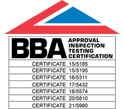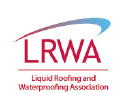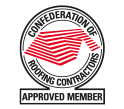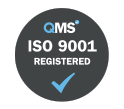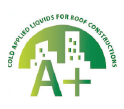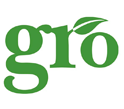Call us on
+44 (0)1268 777871We all recognise the critical importance of fire safety in roofing systems. In this article we aim to provide a comprehensive overview of the current regulatory framework in United Kingdom, pivotal standards such as BS EN 13501-5:2016, as well as the detailed test methods outlined in CEN/TS 1187:2012, writes Michal Trudzik, Technical Head for Proteus Waterproofing.
Additionally, we discuss the guidance provided by relevant official government documents, which is integral to ensuring compliance with fire safety regulations. Through this article, we aim to elucidate our unwavering commitment to adhering to these rigorous standards, which is ensuring that our roofing solutions not only meet but exceed the required fire performance criteria.
England, Wales, Scotland and Northern Ireland
In the United Kingdom, fire safety in buildings is governed by a comprehensive regulatory framework that varies slightly across its constituent countries: England, Wales, Scotland, and Northern Ireland. Each has its own set of building regulations and guidance documents focusing on fire safety, ensuring that buildings are designed, constructed, and maintained to mitigate fire risks and protect occupants.
England
In England, fire safety within and around buildings is primarily regulated by Approved Document B (Fire Safety) under the Building Regulations 2010. This document is split into two volumes: Volume 1 for dwellings and Volume 2 for buildings other than dwellings. It covers various aspects of fire safety, including means of warning and escape, internal fire spread (linings and structure), external fire spread, and access and facilities for the fire service.
Wales
In Wales, fire safety is addressed through Building Regulations Guidance Part B (Fire Safety). Similar to England, the guidance is divided into two volumes: Volume 1 for dwellinghouses and Volume 2 for buildings other than dwellinghouses. This guidance provides technical specifications to help contractors and builders comply with the law regarding fire safety, covering areas such as means of escape, fire spread, structural fire protection, and fire service access.
Scotland
Scotland's approach to fire safety is outlined in the Building Standards Technical Handbook 2022, for both domestic and non-domestic buildings. The handbook provides guidance on achieving the standards set in the Building (Scotland) Regulations 2004. It emphasises life safety objectives, including the design and construction measures to reduce fire risk, restrict fire growth and smoke spread, and ensure safe escape and fire-fighting facilities. The handbook also addresses the use of fire safety engineering principles and acknowledges the complexity of fire engineering designs.
Northern Ireland
In Northern Ireland, fire safety regulations for roofs and roof coverings are outlined in the Technical Booklet E - Fire Safety, which is part of the Building Regulations (Northern Ireland) 2010. It addresses various aspects of fire safety, including means of escape, control of fire growth, fire containment, and facilities for the Fire and Rescue Service. The booklet emphasises the interlinkage of these aspects and suggests considering them as a comprehensive package for achieving acceptable fire safety standards.
Regulations
Each country within the UK has developed a detailed and nuanced approach to fire safety, reflecting a commitment to protecting lives and properties. These regulations and guidance documents are crucial for professionals in the construction and building management sectors, ensuring that all new and existing buildings meet stringent fire safety standards.
In England, the Building Regulations 2010 and the Building Safety Act 2022 form the cornerstone of construction standards, including those for roofing systems.
Building Regulations 2010
The Building Regulations 2010 set out detailed requirements across various aspects of construction, from structural integrity to fire safety. For roofing systems, these regulations demand that materials and workmanship must adhere to robust standards to ensure durability and safety. Roofing systems must be designed and installed to prevent fire spread, resist weather conditions, and provide adequate insulation.
Building Safety Act 2022
The Building Safety Act 2022, a response to the Grenfell Tower tragedy, further strengthens the regulatory framework, focusing on high-rise residential buildings but also impacting broader construction practices. It introduces more stringent requirements for fire safety and the quality of building materials, including roofing systems. The Act establishes the Building Safety Regulator to oversee compliance and introduces the concept of a 'golden thread' of information, ensuring that safety information is maintained throughout the building's lifecycle.
Responsibilities of Specifiers and Installers
For designers, specifiers and installers, these regulations mean a commitment to selecting and using materials that meet the required safety standards. They must ensure that roofing systems are not only compliant with current regulations but also contribute to the overall safety and performance of the building. This includes understanding the fire classification of roofing materials, as specified in Approved Document B, and ensuring that roofing installations are carried out by competent persons.
Roof performance
In England, the regulatory landscape for roof fire testing is governed by a series of standards and guidance documents that ensure the safety and compliance of roofing materials and systems. The key standards include BS EN 13501-5:2016 (Fire classification of construction products and building elements - Classification using data from external fire exposure to roofs tests), complemented by the test methods outlined in CEN/TS 1187:2012 (Test methods for external fire exposure to roofs) and the guidance provided in Approved Document B.
Approved Document B
Approved Document B (ADB) provides guidance on building regulations related to fire safety in England. It covers various aspects of fire safety, including considerations to the resistance of roofs to external fire, limitations around compartmentation, reaction to fire of individual components, and many other. ADB is an essential reference for architects, specifiers, and contractors to ensure that roofing systems meet the necessary fire safety standards.
Compliance with these standards and guidance documents is crucial for roofing professional. We must ensure that roofing materials and systems are capable of withstanding external fire exposure and preventing the spread of fire, thereby enhancing occupant safety and protecting properties.
BS EN 13501-5
BS EN 13501-5:2016 is a European standard that provides a harmonised procedure for classifying the fire performance of roofs when exposed to external fire conditions. This classification system relies on results from CEN/TS 1187:2012 to determine and assign corresponding rating to tested system: BROOF(t4), CROOF(t4), DROOF(t4), EROOF(t4) or FROOF(t4).
In 2019, the regulatory framework for roof fire resistance within ADB has evolved, with BS EN 13501-5 replacing BS 476-3:2004 as the default standard.
The shift towards BS EN 13501-5 was driven by several factors, including the Grenfell Tower fire in June 2017, which underscored the need for a more robust regulatory system for the construction industry. The Hackitt report, issued in the aftermath of the Grenfell fire, called for a comprehensive review of building regulations and fire safety. These regulations aimed to ban the use of combustible materials in the external walls of high-rise buildings and marked a significant step towards adopting more stringent fire safety standards.
CEN/TS 1187
CEN/TS 1187:2012 is a European technical specification that outlines four distinct test methods for evaluating the performance of roofs under external fire exposure. These methods are designed to assess various aspects of fire performance, including fire spread on the outer surface and within the roof, as well as fire penetration.
Test 1 This method involves testing with burning brands to determine the roof's ability to resist fire spread on the outer surface.
Test 2 This test includes burning brands and wind to simulate more challenging conditions and assess the roof's resistance to fire spread under these influences.
Test 3 This method adds supplementary radiant heat to the burning brands and wind, providing a more rigorous assessment of the roof's fire performance.
Test 4 The most comprehensive of the four, this two-stage evaluation includes burning brands, wind, and radiant heat to gauge the roof's resistance to external fire spread and penetration.
In England, Test 4 is prescribed to establish roof’s resistance to external fire spread. The classification system resulting from this test ranges from BROOF(t4), indicating no penetration of the roof system within 60 minutes and the highest performance, to FROOF(t4), which represents the lowest performance or an undetermined outcome.
Note: CEN/TS 1187:2012 evaluates performance of a complete roof system (including roof deck, insulation if present, waterproofing system applied, any primers/adhesives/fixings and other relevant layers/components) to obtain best possible determination of final behaviour under fire, and is not designed to test individual components in separation.
Our commitment
At Proteus Waterproofing, we are deeply committed to ensuring the safety of building occupants and the structural integrity of every project we undertake. Our dedication to rigorous testing and compliance with the latest building regulations is at the heart of everything we do. By engaging in continuous and innovative third-party testing at accredited laboratories, we ensure that our roof waterproofing systems not only meet but exceed the required standards.
Year after year, our systems achieve the prestigious BROOF(t4) classification, underscoring their superior performance in fire resistance. This achievement is more than just compliance; it's a testament to our commitment to providing our clients with the most reliable and safe roofing solutions available.
As a responsible partner in the construction industry, Proteus Waterproofing is dedicated to pushing the boundaries of safety and performance. Our role as an NBS Specification Writing Partner and a RIBA CPD Provider further cements our credibility and expertise in the field. Proteus Waterproofing will Design, Develop and Deliver, your next project.
The Proteus full package
Proteus Waterproofing will always go the extra mile, offering more services. Our in-house technical team has a combined industry knowledge of over 250 years.
Our servicesGuaranteed for up to 25 years!
Proteus Waterproofing offers a range of comprehensive guarantees covering both labour and materials for durations of up to 25 years. Subject to type of project and duration, independent pre-paid insurance backed guarantees are also available.
Discover moreWant to train with Proteus?
Proteus Waterproofing provides extensive and ongoing training on their cold applied liquid systems at our specialised training facilities either at Head Office or at our Northern training facility. On site training can also be provided if required to ensure that our Proteus Approved Contractor Network continues to deliver quality installations.
Want to train?

